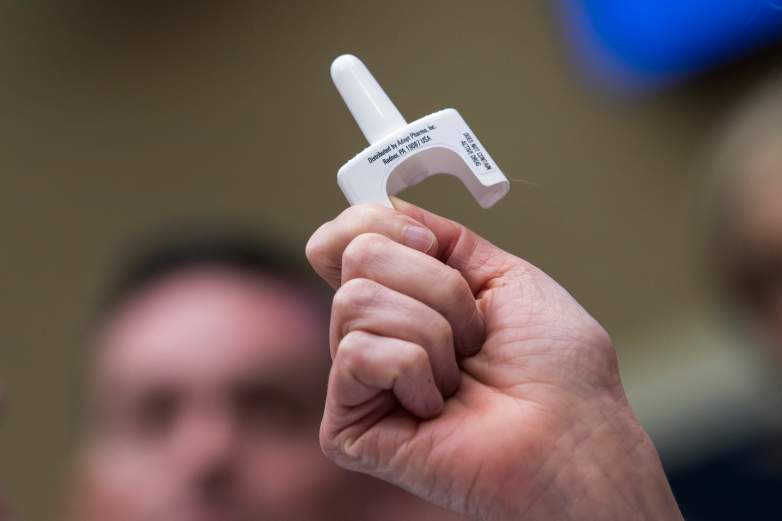
Ketamine won U.S. approval for patients whose depression levels are clinical and very hard to treat. The substance is one of many that the Food & Drug Administration might continue to reconsider in the months and years to come for severe forms of mental illness, as mental health treatment evolves.
Ketamine has been used for decades as a powerful anesthetic to prepare patients for surgery. The drug will also be faster-acting than older drugs that were used to treat depression, according to reports.
Here’s what you need to know:
1. Ketamine Is Sold as Spravato
The FDA approved ketamine and esketamine for depression. Esketamine is a molecule.
Esketamine is used clinically, in cases of very difficult-to-treatment depression, in other words, depression that doesn’t respond to more than one antidepressant medication. It works through the brain’s pathways
Esketamine comes from ketamine, which is an anesthetic. Studies of ketamine as a depression treatment began to gain steam, as ketamine became a new way of treating depression.
Ketamine will be sold as Spravato, by Johnson & Johnson.
2. Ketamine is Mind-Altering
U.S. health officials have acknowledged ketamine as a mind-altering drug. The drug will only be prescribed or will be allowed to be prescribed, to patients with severe depression.
The Food and Drug Administration cleared the use of the drug on Tuesday. Patients who have not found effectiveness with older antidepressants would need to seek the advice of a clinical professional, in order to find out if the drug is right for them.
Ketamine was reportedly also a party drug in the underground rave culture due to its ability to produce psychedelic experiences that were out-of-body.
Dr. Allen Frances criticized the release and hype around the drug, in his tweet above, which states:
“Smartest people can say dumbest things.
NIMH Head all wrong on #ketamine:
1)Patients dont “resist” treatments-meds fail them
2)No really novel antidepressants since first ones 60 yrs ago
3)#FDA rushed approval after 4 small studies
4)Little efficacy vs placebo
5)Safety ignored”
3. Ketamine is a Nasal Spray

Dr. Nora Volkow, director at the National Institute on Drug Abuse (NIDA) and National Institutes of Health (NIH), holds up a narcan nasal spray (naloxone) during a House Energy and Commerce Committee hearing.
Ketamine is an inhalable drug. Johnson & Johnson reports that it takes effect almost immediately. This nasal spray acts with different aspects of brain and brain chemicals that differ from decades-old antidepressants like Prozac.
Though patients who are prescribed the drug will be able to self-administer, the nasal spray will be issued during visits to a medical clinic. The nasal spray cannot be taken home. According to FDA regulations and medical indications/rules, a health care provider will need to monitor the patient until that patient has been cleared to leave (and will still leave without the spray in tow).
4. Ketamine is Being Tightly Controlled & Carefully Released
An advisory panel recommended the use of ketamine in 14 to 2 vote in favor of the drug, in early February. Since the drug works through the brain’s glutamate pathways, it is the first new type of medicine approved by the FDA to treat depression in 30 years.
Despite this overwhelming vote, the FDA has very tight restrictions around the safety and administering of the drug.
“Because of safety concerns, the drug will only be available through a restricted distribution system and it must be administered in a certified medical office where the health care provider can monitor the patient,” said Dr. Tiffany Farchione, according to reports. Farchione is the acting director of the Division of Psychiatry Products in the FDA’s Center for Drug Evaluation and Research.
5. Ketamine, a.k.a. Spravato, Does Have a Side Effect Warning
According to reports, clinicians will make it clear of the possible side effects that come with use of the newly approved ketamine/Spravato, by Johnson & Johnson.
Side effects of Spravato include dizziness, nausea, vertigo, anxiety, lethargy, increased blood pressure, vomiting, feeling drunk, decreased sensitivity, sedation and dissociation, a feeling of being temporarily “disconnected” from your body and your mind.
KEY NOTES FOR SPRAVATO:
- People with high blood pressure and vascular disorders should refrain from taking Spravato completely.
- People should always get a good night of “restful sleep” before driving, if they wish to drive after taking the drug.
- Spravato is indicated as a drug that could cause fetal harm, so women who have an interest in reproductive planning should consider prevention.
- Women who are breastfeeding need to be careful; they should “not breastfeed while being treated,” the FDA said.
A “boxed warning” on the drug will be made mandatory and available to alert patients of the risks of “sedation, and difficulty with attention, judgment and thinking (dissociation), abuse and misuse, and suicidal thoughts and behaviors after administration of the drug,” the FDA said in its public statement.
Because of the risks associated with the drug, patients must be monitored for at least two hours after taking the drug.
Studies of ketamine-derived antidepressant treatments have happened for decades, with the first study published in 2000.
“Several studies now provide evidence of ketamine hydrochloride’s ability to produce rapid and robust antidepressant effects in patients with mood and anxiety disorders that were previously resistant to treatment,” noted an array of scientists back in 2017.
